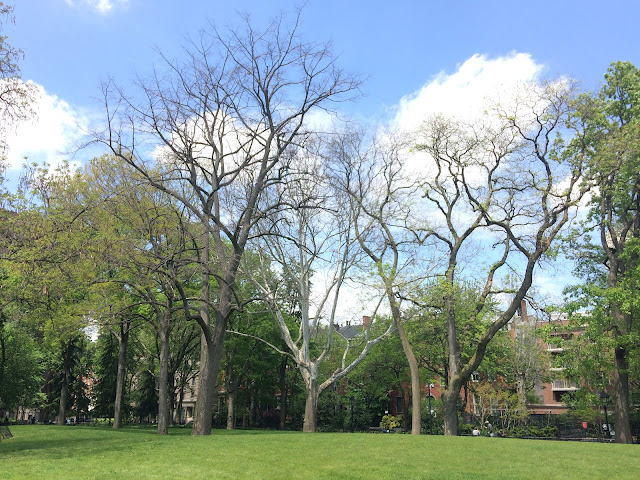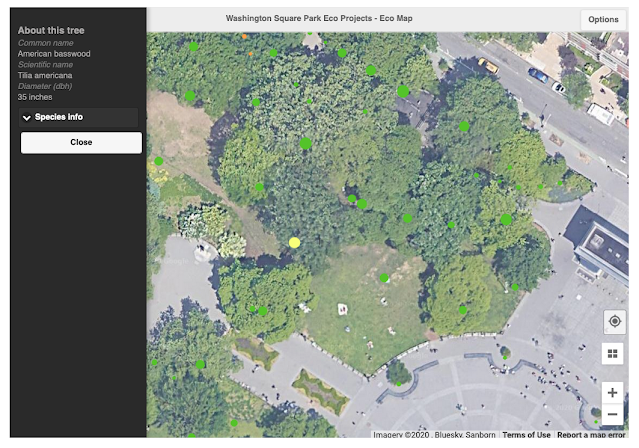The title of this post is a rhetorical question. While I cannot say definitely that fill killed the 35-inch American linden in the northwest woodland of Washington Square Park, fill contributed to the death of this tree. In summer 2019, the soil grade in the northwest woodland was changed (fill was added) as part of a lawn repair project. I voiced concerns about the impact of soil mounding on mature trees on this blog and directly with the NYC Parks administrator of the park.
The critical root zone (CRZ) of a tree is just that: it is essential to the health of a tree and every effort should be made to prevent disturbance in this area. A quick estimate of the CRZ is the area below a tree's drip line or the area underneath the tree's canopy spread. NYC Parks requires a CRZ ratio of "½ foot per one inch DBH (diameter at breast height) to 1½ foot per one inch DBH." The agency provides a stricter calculation of 1½ foot per one inch DBH standard if a species fill tolerance is unknown. It is known that lindens have a low tolerance for grade change so I would argue that the higher standard should be used. The American linden in the northwest woodland is 35 inches in diameter. Even using the lowest ratio of 1/2 foot per 1 inch DBH, disturbance should not have occurred within 17 feet of the trunk of the linden. Fill was added with the CRZ of the linden tree.
Photographic evidence shows a dramatic change in the canopy health of
the large American linden in the northwest woodland. The tree has not
leafed out as of the writing of this post. Photographs taken in previous seasons show the tree in leaf.
JULY 2017 via Google Maps user
AUGUST 2019 via localecologist.org
MAY 15,2020 via localecologist.org
It is unfortunate to lose another large tree from the canopy in Washington Square Park. In June 2019, I reported on the removal of 10 large trees from the park between 2017 and 2019. The linden had several dead limbs, but the branches were relatively small and did not have a pattern which might indicate an existing abiotic or biotic stressor. If the linden was stressed prior to the grade change, the layering of fill above its critical root zone would have intensified the stress and reduced the tree's coping ability and gas and water exchange. Arboricultural standards are evidence based and are recommended to protect trees, especially vulnerable species and mature trees. The loss of a mature tree is significant; its size related to its age has conferred numerous benefits both quantified and unnamed to its biophysical and cultural environments. The preservation of existing canopy on public land seems like an easy task, the proverbial low-hanging fruit. The case of this dead linden in a celebrate public park shows that my assumption is naive. There is much work to be done to preserve our existing urban tree canopy.






Comments
Post a Comment
Thank you for commenting on this post!